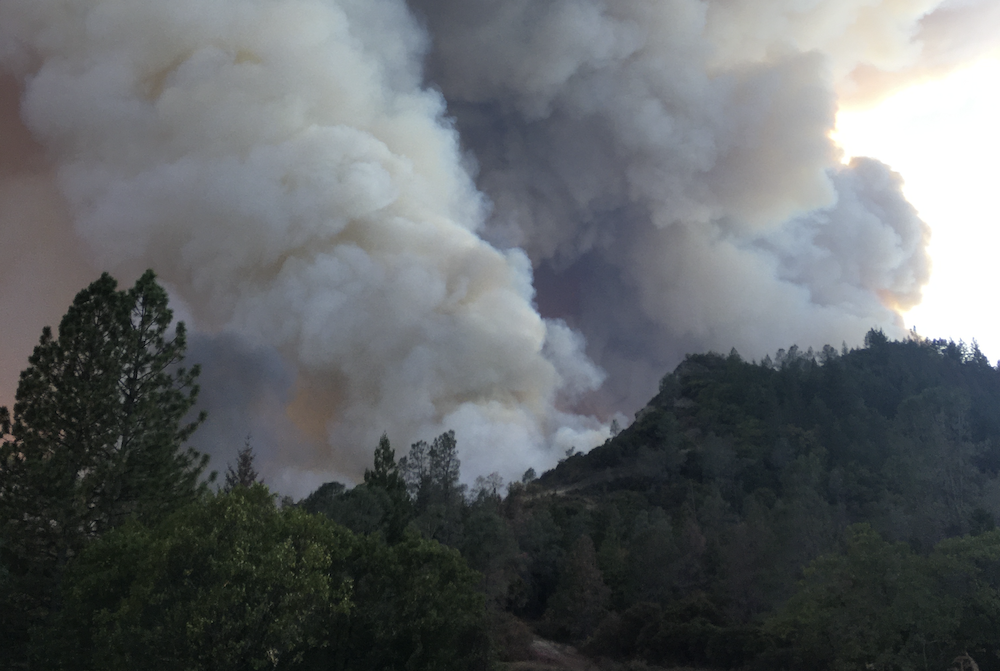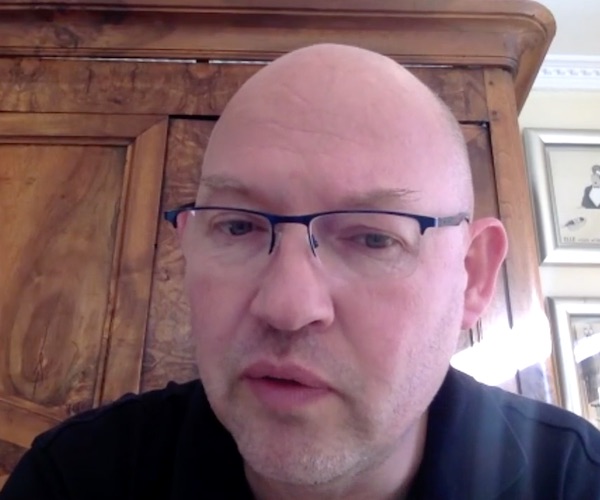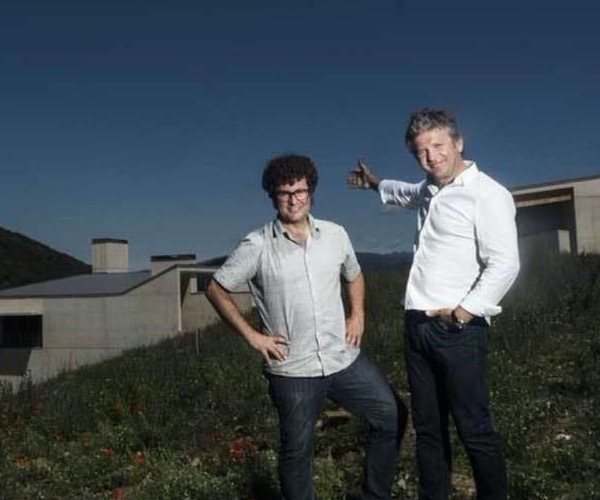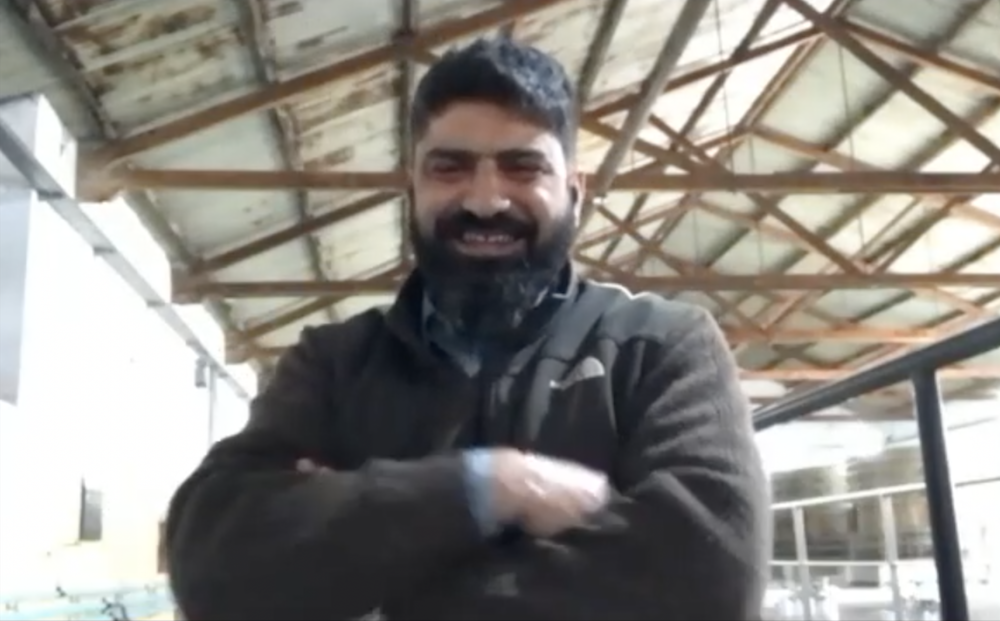
Pic courtesy of Mike Dunn.
Every year now, sometimes each month, another record is broken here in Canada or around the globe, and another predictably unprecedented stage is reached in our ongoing global climate disaster. The full effects of climate change as outlined in the most recent, and likely final, IPCC report are now everywhere and plain for all to see.[1] Only the most unhinged conspiracists are still able to cling to their denial now.
In my previous piece on BC Wine, I stated that the wildfires burning in British Columbia and up and down the West Coast of the States have now become commonplace and are expected every year. This expectation is not only a response to but also a way for us to cope with unprecedented events by normalizing them. What else can we do, we ask ourselves, but (for)get on with it or give in to despair? Needs must, when the Devil drives. One curious idea deployed in this normalization is not to simply pretend the disaster is not happening, nor to give up, but to change our perspective. What if wine damaged by fire and smoke is in fact expressing itself truly as terroir?
The idea that this damage to grapes and subsequently the wine should be understood as a part of the growing conditions of the fruit and not simply a viticultural hazard was initially a response to the devastating fires of 2017 in Oregon.[2] Oregon winemakers were keen to save what they could of the vintage. But how best to do that? On the one hand, they could strip the juice of any smoke precursors and send it to bulk production (or later, alcohol sanitizer during COVID). On the other hand, some thought, what if we embraced the damage as a signature and ‘leaned into it’?[3]
As wildfires blazed across several European wine regions this summer[4], the problem of smoke-damaged wine is no longer solely the concern of West Coast and Australian vintners but of the global wine industry. Let’s first unpack this complex problem before we begin to answer the question of whether smoke taint can be considered part of terroir.
Vineyards are vulnerable to wildfire most obviously through being burnt. They are also vulnerable, however, to something known as smoke taint. If you’ve ever been around a campfire, you already know how powerful the volatile aromatic compounds of smoke can be. Only a very small amount is necessary for your clothes to smell of smoke for days to come. That smoke becomes trapped in the fibres of your clothes and very little of it is needed for us to perceive it. Wesley Zandberg, a professor of chemistry at UBC, has been at the forefront of smoke taint research in Kelowna and uses the analogy of mixing a teaspoon of smoke compounds into an Olympic-sized swimming pool; which is all it takes to make 2,500,000 litres of water smell and taste smoky.[5]
This is not exactly what happens with vineyards and smoke, however. Wine grapes absorb these toxic compounds and neutralize them as a defense mechanism. The molecules responsible for smoke taint are free volatile phenols (principally guaiacol, 4-methylguaiacol, syringol, 4-methylsyringol, o-, m-, and p-cresols). These compounds are produced and released into the atmosphere when lignin in wood is burnt and are then absorbed directly by the waxy cuticle on grape berries. There is no strong evidence that these compounds are transferred through vine leaves and into the berries.[6]
These phenols then go ‘undercover’ via the toxicity response from the plant which binds them to sugars inside the berry. These new compounds are called glycosides and the phenols are now no longer volatile or detectable in them. Most of these bound phenols and their glycoside forms remain in the skins of the berries and are termed ‘smoke taint precursors’. It is these precursors which are tested for in order to determine if grapes are smoke-tainted or not.
When the juice is fermented, the smoky phenols are released as yeast metabolizes sugars and break apart the glycoside bond, allowing the smoky flavour to become volatile or to be perceived. What’s worse is that these glycosides can also break apart over time in the barrel or the bottle, unnoticed by the winemaker. Nor is the drinker safe. A wine presented without detectable smokiness can explode in the mouth when you drink it because enzymes in our saliva help to break down those same glycosides, increasing the smoke taint with each sip we take.
What does smoke-tainted wine taste like? Most people use the analogy of licking an ashtray or the business end of a cigar, but these compounds can also present themselves to different tasters with medicinal or chemical inflections rather than straight-up ash. Disinfectant and burnt rubber are not uncommonly found descriptors and there are some who describe lightly smoke-affected wines more in the range of mesquite, tar, and clove; rather similar to the profile of a mezcal. Indeed, two of the smoky phenols in question, Guaiacol and 4-Methylguaiacol, are routinely found in high-toast oak barrels and consequently, the wines raised in those barrels. More curiously, one-in-five people are unable to detect smoke taint in wine at all, based upon the genetic lottery for olfactory sensory cells.[7]
Since most of the scientific work on smoke taint is relatively recent, researchers are still unsure about many of the factors at play in smoke taint. Whether or not the grape variety plays a role in smoke taint precursor production remains to be seen. Pinot Noir appears more vulnerable to smoke phenols than other varieties because of its thin skins and since the glycosides are concentrated there, the potential disruption of Pinot’s aromas appears to be greater.
We do know that, since these phenols arise from burning lignin, smoke from a grass fire will not affect a vineyard in the same way as smoke from trees. Smoke taint in wine arises from the exposure of grapes to smoke not only from veraison (the development of colour in the berry) to harvest, but as some Australian research suggests, also when the berries are pea-sized and up to bunch closure.[8] Recent smoke contains more of these phenols as the heavier compounds fall and settle on the ground over time. Wind conditions also play a part, carrying smoky phenols further sometimes, missing a nearby vineyard but landing on one kilometers away. The length of smoke exposure is also not conclusively understood, but some studies have found absorption after very short exposure time. Hazy conditions, where you can still see for more than 10km, are generally not likely to contribute much smoke taint but the exact level of exposure needed for smoke taint has yet to be determined.
For grape-growers, this uncertainty is nerve-wracking. If you can see ash in your vineyard, it does not necessarily mean you have smoke-taint. Likewise, just because you don’t see any ash from nearby wildfires, it doesn’t mean you don’t have it.
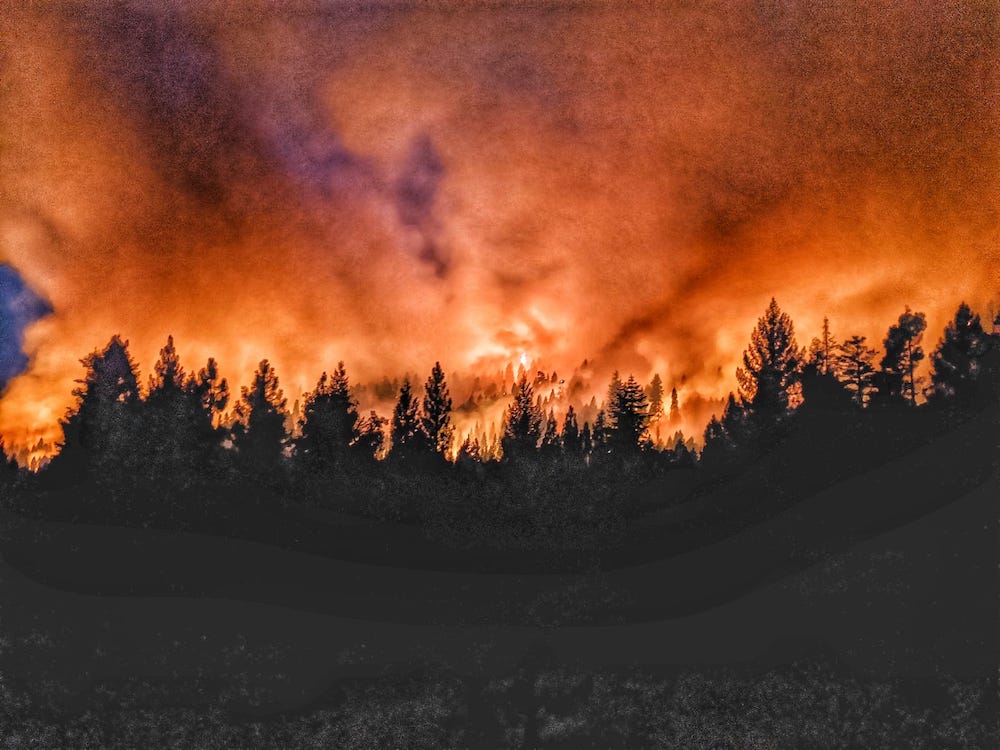
Pic courtesy of Mike Dunn.
There are some remedial actions winemakers can take like trying to minimize black grape skin contact by directing smoke-tainted red-wine grapes to rosé or white wine production. Gentle whole cluster pressing for white grapes can further decrease the impact of these phenols. Other techniques, which largely occur post-fermentation, like spinning cones, reverse osmosis, carbon fining, or enzymatic treatments can strip a wine of the elements which could make the wine great in the first place, much like the plastic wrap used in the removal of TCA, making the remaining wine suitable only for bulk purposes.[9]
Deborah Parker-Wong definitively states that wildfires are a part of terroir and that we should “[a]nticipate more rosés, early-drinking reds, and even skin-contact whites as [winemakers] seek to get the most out of high-quality fruit that might otherwise be destined for the bulk market due to smoke exposure”. [10]
On the face of it, proposing that the damage to grapes and wine caused by wildfires is a part of terroir and not simply a viticultural hazard like frost or hail seems like a desperate attempt to make an unpleasant reality palatable. Frost and hail, however, causes the physical loss of grapes. Smoke taint, on the other hand, impacts our sensory enjoyment of a wine, much more like Lady Bug taint or Brettanomyces does.
The concept of terroir was frequently, and perhaps unjustly, already tied to wine faults in the image of the American visiting France and tasting a heavily Brett-infected wine: “This wine smells like shit,” exclaims the offended tourist. “Ah, Monsieur has identified the goût de terroir,” responds the snooty sommelier. Indeed, in any elaboration of terroir as a bio-climate, microorganisms in the soil form the basis of terroir and therefore any one strain of Brett (of which there are 38 or so) in the barrel should be considered terroir under this definition.
Could smoke-affected wines be similarly considered? Is it possible that smoke taint has a regionality, as suggested by Wesley Zandberg and the British Columbia Wine Institute?[11] Could a smoke taint regional identity be identified through the different cocktails of smoky phenols arising from different combustible material and thus found as a ‘signature’ of a given region? Is there a possible future in which sommeliers can discern the difference between 4-methylguaiacol and p-cresol? Or would even want to?
Smoke taint is always isolated to a single vintage and so definitively would present itself as the ‘character of the vintage’. This is more closely aligned with weather and out of step with our usual notion of terroir that requires something to be sensed beyond vintage variation. However, if it happens consistently every year, could ladybug taint for instance, ever be considered part of terroir?
Since smoke taint is a sensory fault, the decisive point in any debate about it is whether it could possibly be desirable or not. If the question does become one of aesthetics, then smoke taint might indeed be considered desirable at different times and to different people, just as Brettanomyces or even heavily toasted new wood can be favoured by some drinkers. We should also take note that the language we use about these wines already has aesthetic decisions embedded in them: smoke “taint”, Ladybug “taint”; Brett “infection”. Yet, the same smoke-affected grapes grown in Oregon in 2018 were rejected by one buyer and accepted by others, based upon sensory evaluation. [12]
Once we open ourselves to questions of taste in wine, the conversation quickly finds itself upon the horizon of the question of balance. Balance is the last redoubt for those who wish to make a distinction between ‘good’ and ‘bad’ wine, whether that wine is flawed, faulty, or commercially made. The distinction I find productive to make in terms of balance is between a flaw and a fault. If a flaw in a wine overpowers all the other elements, then it becomes a fault and the wine is excused from further consideration. A flaw can be identified as such, but it may not necessarily detract from the enjoyment of the wine and it may even add to it, depending upon the drinker. Crucially, this assessment has balance as the crux. A flaw can often be considered a ‘beauty mark’, and as Jamie Goode points out, “[b]eauty includes flaws. Beauty isn’t the absence of flaws.”[13]
Finally, our discussion takes us towards the subject of natural winemaking since techniques to mitigate smoke-affected wines can be considered antipathic to natural winemaking. If your grapes are smoke-affected, making a wine which shows this character could be considered the most ‘natural’ wine of a wildfire region. A winemaker who has grapes showing smoke precursors is faced with the decision to either heavily manipulate the wine to mitigate this, throw them away and lose the vintage, or to present a wine with smoke-affected character.
Some vignerons affected by ladybug taint have gone ahead to bottling, perhaps hoping that the rancid peanut butter caused by methoxypyrazines won’t be too overpowering for their clients. Similarly, the question for evaluating natural wine must be whether certain flaws add complexity to the wine or whether they erase identity. It is a question of balance and personal taste, in the final analysis, whether you find the intense animality of Château de Beaucastel or Musar compelling or revolting, and whether a smoke-affected wine could be served alongside your meal.
Does the presence of smoke taint precursors automatically translate to a fault, or can wine made from smoke-affected grapes ever be palatable to consumers? Will new pre-crush techniques save the vintage for some vineyards or does any mitigation count as too much intervention? For some, any smoke taint should be considered a fault, especially as the presence of any precursor will be amplified by drinking. There is no balance to be struck here. For others, desperate to save their livelihoods, a wine which presents organoleptically like a mezcal may be the new normal.
Oregon winemaker Nate Ready says that “wildfires are totally part of the terroir. That’s what’s so cool about wines—they reflect the culture and the ecosystem. And living in the West, we should get used to it. This is going to be part of the flavor of living in the West.”[14]
As Europe now faces similar wildfire conditions as the West Coast of North America and Australia, the challenge of smoke taint will be one the wine world will have to face, if not together, at least simultaneously. Now that we are past the point of no return with climate change, now that the fires are in our glasses, we can no longer pretend the party must go on regardless. The only road left to us late revenants now is to perhaps reorient our palates and habituate ourselves to the global disaster upon us and to push, finally, for real policy change, not solely for our political beliefs anymore, but for our very livelihoods, for our very lives.
[1] https://www.ipcc.ch/report/ar6/wg1/
[2] https://daily.sevenfifty.com/embracing-smoke-taint-as-an-expression-of-terroir/
[3] Ibid, “I’m not apologizing for the smoke. I’m not the one who started the goddamn fire! I’m just leaning into it.”
[4] https://www.decanter.com/wine-news/deadly-wildfires-southeast-france-463729/
[5] https://theconversation.com/up-in-smoke-how-wildfires-are-tainting-grapes-and-threatening-the-wine-industry-165052
[6] “While volatile phenols can be also found in leaves, no significant translocation from leaves to berries of volatile phenols or their glycosides has been observed.” https://www.awri.com.au/wp-content/uploads/2012/04/smoke-taint-entry-into-grapes-and-vineyard-risk-factors.pdf
[7] ‘“There’s naturally a lot of genetic diversity in people and what they can smell and taste,” says Oregon State University’s Elizabeth Tomasino, who studies sensory aspects of smoke exposure to grapes. “About 20% of the population, they don’t taste [smoke taint] at all. But that leaves 80% that do.”
“Within that 80%, sensitivity can vary by as much as a hundredfold. Foster experienced this when he poured a wine he knew to be smoke-tainted to a group of winemakers and growers. The response was varied.’ https://www.winemag.com/2021/02/17/wine-science-smoke-taint/
[8] https://www.awri.com.au/industry_support/winemaking_resources/smoke-taint/
[9] https://goodfoodrevolution.com/a-101-in-smoke-taint-and-how-to-treat-it-with-christian-deblasio-of-purfresh-wine-part-1/
[10] https://deborahparkerwong.com/2020/10/10/taint-or-terroir/
[11] “Evidence from the study suggests that smoke taint presents itself in a regional fashion: both the levels of volatile phenols and the way in which they are biochemically transformed/stored within grapes appears to vary from region to region. It has been recommended that this variance be catalogued over several growing seasons.” https://winebc.com/industry/wp-content/uploads/sites/2/2018/08/BCWI_smoketaintUBCOstudykeymsg-1.pdf
[12] “While Copper Cane deemed grapes unusable from its tests, ‘I had three other buyers and they were very happy with their testing results,’ says Pyle. ‘They had been doing it regularly throughout August and into September, and they were coming up with the exact opposite conclusions [to Copper Cane’s tests]. Those other three buyers are very pleased with the wines they are in the process of making.’” https://www.npr.org/sections/thesalt/2019/03/06/698248352/oregon-wineries-come-together-to-save-grapes-rejected-for-smoke-taint
[13] http://www.the-buyer.net/opinion/jamie-goode-wine-flaws/
[14] https://daily.sevenfifty.com/embracing-smoke-taint-as-an-expression-of-terroir/

